The Effect of Y on the Microstructure, Mechanical and Wear Properties of ZCuSn10Pb10 Alloy
Abstract
:1. Introduction
2. Materials and Methods
2.1. Alloy Preparation
2.2. Mechanical Property Test
2.3. Microstructure Characterization
2.4. XRD Characterization
2.5. Friction Wear Experiment
2.6. Density Measurement
3. Results and Discussion
4. Conclusions
Author Contributions
Funding
Data Availability Statement
Acknowledgments
Conflicts of Interest
References
- Shilstein, S.; Berner, A.; Feldman, Y.; Shalev, S.; Rosenberg, Y. Distinguishability between ancient and modern leaded tin bronzes by the composition of their lead inclusions. Sci. Technol. Archaeol. Res. 2019, 5, 29–35. [Google Scholar] [CrossRef] [Green Version]
- Namini, A.S.; Azadbeh, M.; Mohammadzadeh, A.; Shadpour, S. Liquid Phase Sintering of Leaded Tin Bronze Alloyed Powder. Trans. Indian Inst. Met. 2016, 69, 1377–1388. [Google Scholar] [CrossRef]
- Huttunen-Saarivirta, E.; Isotahdon, E.; Metsäjoki, J.; Salminen, T.; Ronkainen, H.; Carpén, L. Behaviour of leaded tin bronze in simulated seawater in the absence and presence of tribological contact with alumina counterbody: Corrosion, wear and tribocorrosion. Tribol. Int. 2019, 129, 257–271. [Google Scholar] [CrossRef]
- Turhan, H. Adhesive wear resistance of Cu–Sn–Zn–Pb bronze with additions of Fe, Mn and P. Mater. Lett. 2005, 59, 1463–1469. [Google Scholar] [CrossRef]
- Chen, K.; Wu, X.; Zhang, A.; Zhang, J.; Chen, X.; Zhu, Y.; Wang, Z. Development of wear resistant Cu-12Sn-1.5Ni alloy via minor addition of Fe during casting process. Appl. Surf. Sci. 2021, 573, 151623. [Google Scholar] [CrossRef]
- Prasad, B.K.; Patwardhan, A.K.; Yegneswaran, A.H. Tensile Properties of Some Copper- and Zinc-Based Alloys: Effects of Strain Rate and Test Temperature. J. Mater. Eng. Perform. 2000, 9, 688–699. [Google Scholar] [CrossRef]
- Kurzawa, A.; Roik, T.; Gavrysh, O.; Vitsiuk, I.; Bocian, M.; Pyka, D.; Zajac, P.; Jamroziak, K. Friction Mechanism Features of the Nickel-Based Composite Antifriction Materials at High Temperatures. Coatings 2020, 10, 454. [Google Scholar] [CrossRef]
- Fereidouni, H.; Akbarzadeh, S.; Khonsari, M. On the assessment of variable loading in adhesive wear. Tribol. Int. 2019, 129, 167–176. [Google Scholar] [CrossRef]
- Zhu, J.; Ma, L.; Dwyer-Joyce, R. Friction and wear of Cu-15 wt%Ni-8 wt%Sn bronze lubricated by grease at room and elevated temperature. Wear 2020, 460, 203474. [Google Scholar] [CrossRef]
- Guo, X.; Zhang, G.; Li, W.-Y.; Dembinski, L.; Gao, Y.; Liao, H.; Coddet, C. Microstructure, microhardness and dry friction behavior of cold-sprayed tin bronze coatings. Appl. Surf. Sci. 2007, 254, 1482–1488. [Google Scholar] [CrossRef]
- Ahsan, Q.; Haseeb, A.S.M.A.; Haque, E.; Celis, J.P. Wear Failure of a Leaded Bronze Bearing: Correlation Between Plant Experience and Laboratory Wear Test Data. J. Mater. Eng. Perform. 2003, 12, 304–311. [Google Scholar] [CrossRef]
- Griesser, M.; Kockelmann, W.; Hradil, K.; Traum, R. New insights into the manufacturing technique and corrosion of high leaded antique bronze coins. Microchem. J. 2016, 126, 181–193. [Google Scholar] [CrossRef]
- Fan, X.; Wang, C.; Jin, P. Effect of heat treatment on corrosion behavior behavior of bronze. J. Chin. Soc. Corros. Prot. 2008, 28, 112–115. [Google Scholar]
- Afshari, E.; Ghambari, M.; Farhangi, H. Effect of microstructure on the breakage of tin bronze machining chips during pulverization via jet milling. Int. J. Miner. Metall. Mater. 2016, 23, 1323–1332. [Google Scholar] [CrossRef]
- Ren, X.; Ren, J.; Zhang, G.; Xu, H.; Wen, L.; Sun, G. Effects of rare-earth Y addition on microstructure and mechanical properties of lead-tin bronze. J. Meas. Sci. Instrum. 2018, 9, 84–87. [Google Scholar]
- Gupta, R.; Srivastava, S.; Kumar, N.K.; Panthi, S.K. High leaded tin bronze processing during multi-directional forging: Effect on microstructure and mechanical properties. Mater. Sci. Eng. A 2016, 654, 282–291. [Google Scholar] [CrossRef]
- Equey, S.; Houriet, A.; Mischler, S. Wear and frictional mechanisms of copper-based bearing alloys. Wear 2011, 273, 9–16. [Google Scholar] [CrossRef]
- Oksanen, V.; Lehtovaara, A.; Kallio, M. Load capacity of lubricated bismuth bronze bimetal bearing under elliptical sliding motion. Wear 2017, 388, 72–80. [Google Scholar] [CrossRef]
- Kadhim, H.A.; Abed, I.J. Investigation Wear Behaviour of Tin Bronze Alloy Prepared by Different Casting Techniques. IOP Conf. Ser. Mater. Sci. Eng. 2021, 1094, 012126. [Google Scholar] [CrossRef]
- Zhuo, H.; Ye, N.; Liu, W.; Tang, J.; Zhang, J. The Effect of Y on the Microstructure and Properties of Cu Alloys. Chin. Rare-Earths 2018, 39, 40–47. [Google Scholar]
- Liu, Q.; Fu, G.; Su, Y.; Zhang, Z.; Xiong, Q. High-Temperature Oxidation Behavior of Cu-Si-Y Alloys. High Temp. Mater. Process. 2013, 32, 397–403. [Google Scholar] [CrossRef]
- Cui, H.; Guo, J.; Su, Y.; Ding, H.; Bi, W.; Li, X.; Fu, H. Effect of Cr addition on microstructure and wear resistance of hypomonotectic Cu–Pb alloy. Mater. Sci. Eng. A 2007, 448, 49–55. [Google Scholar] [CrossRef]
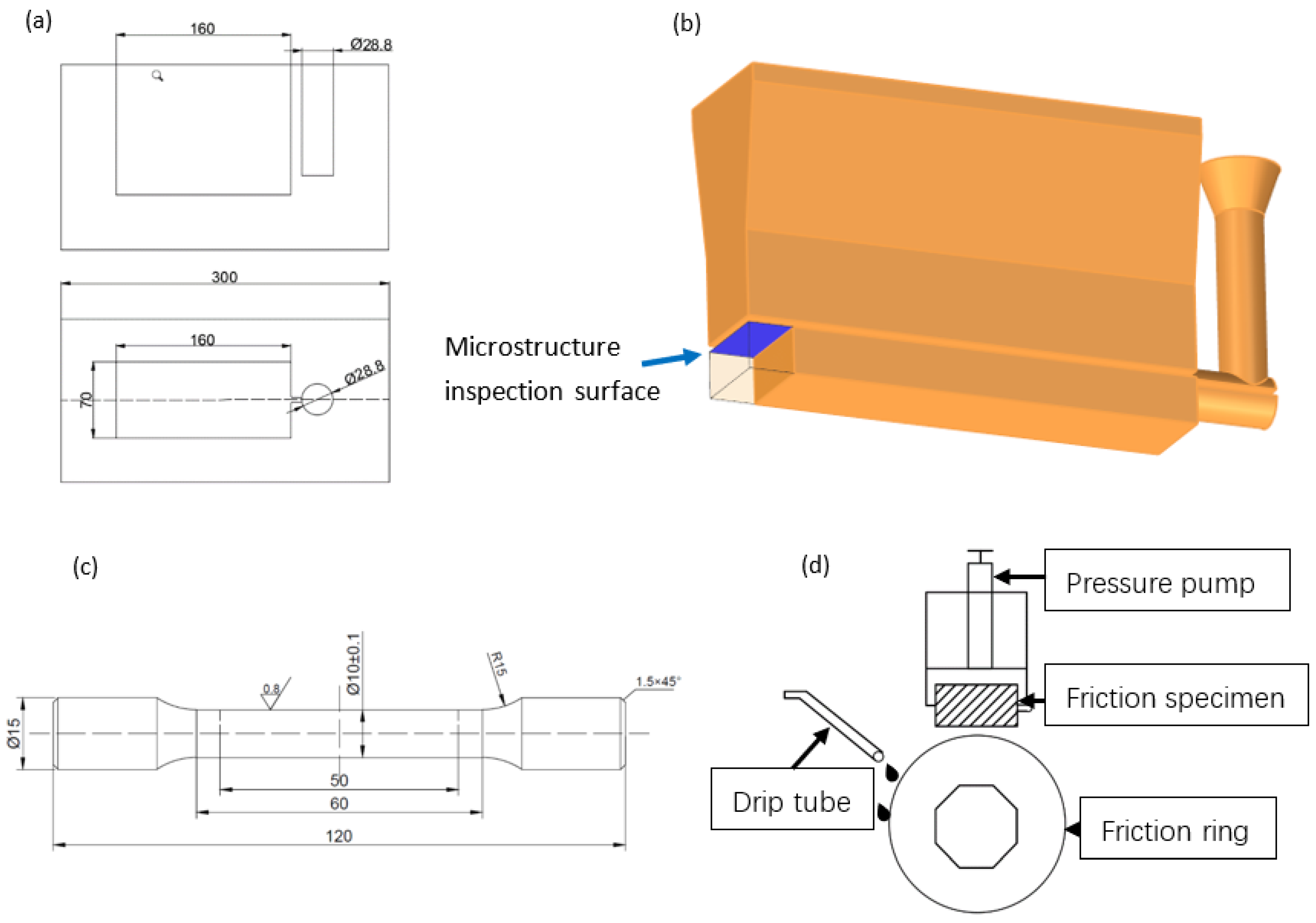
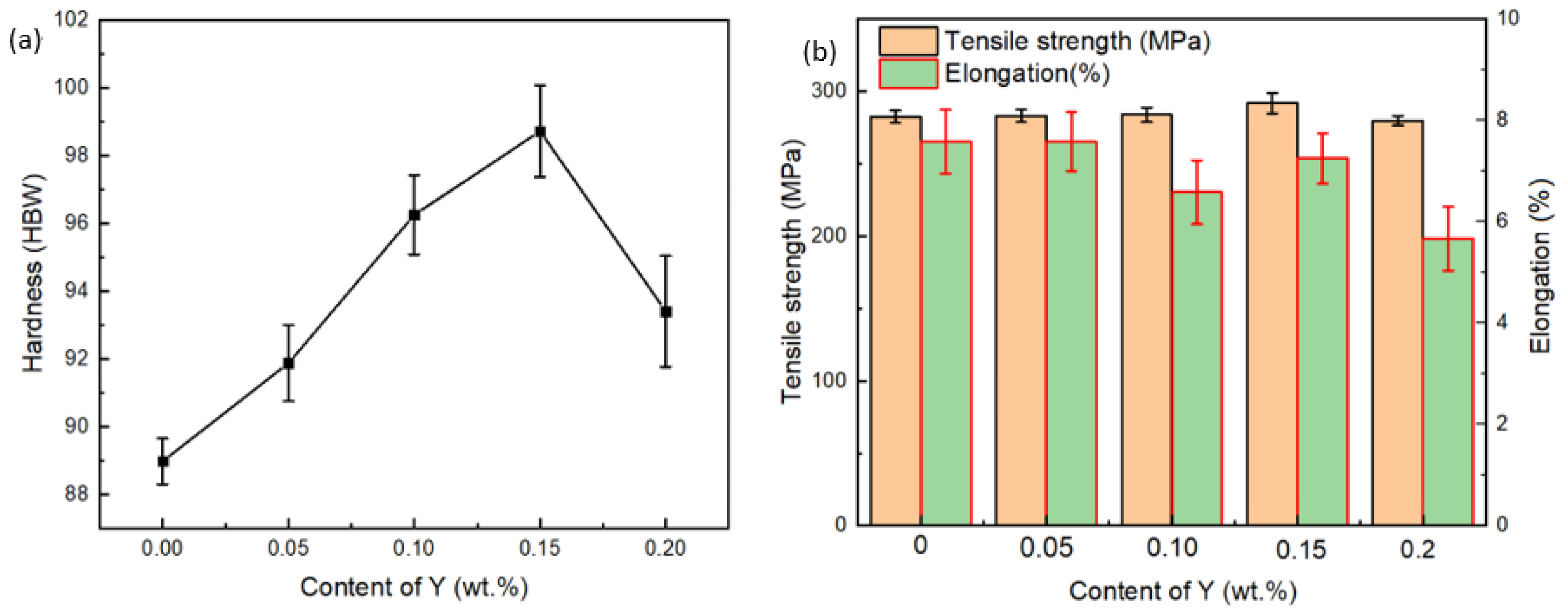
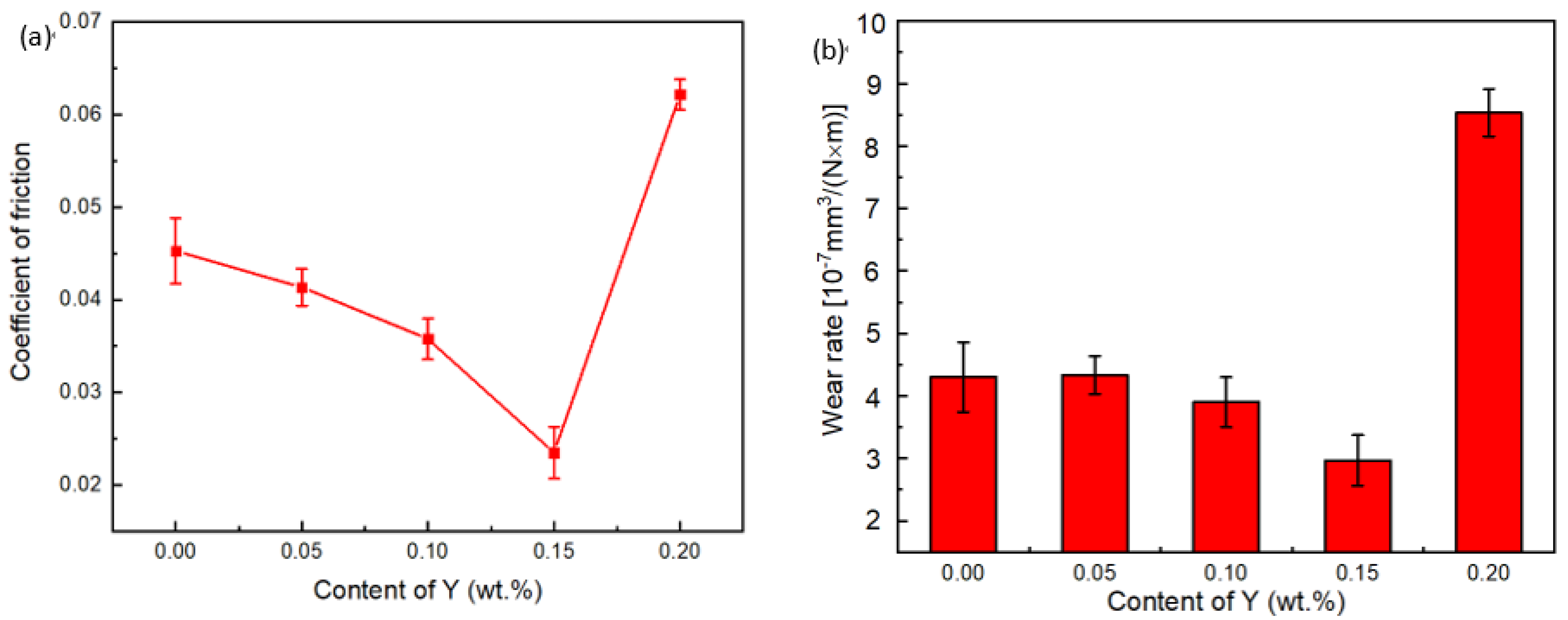
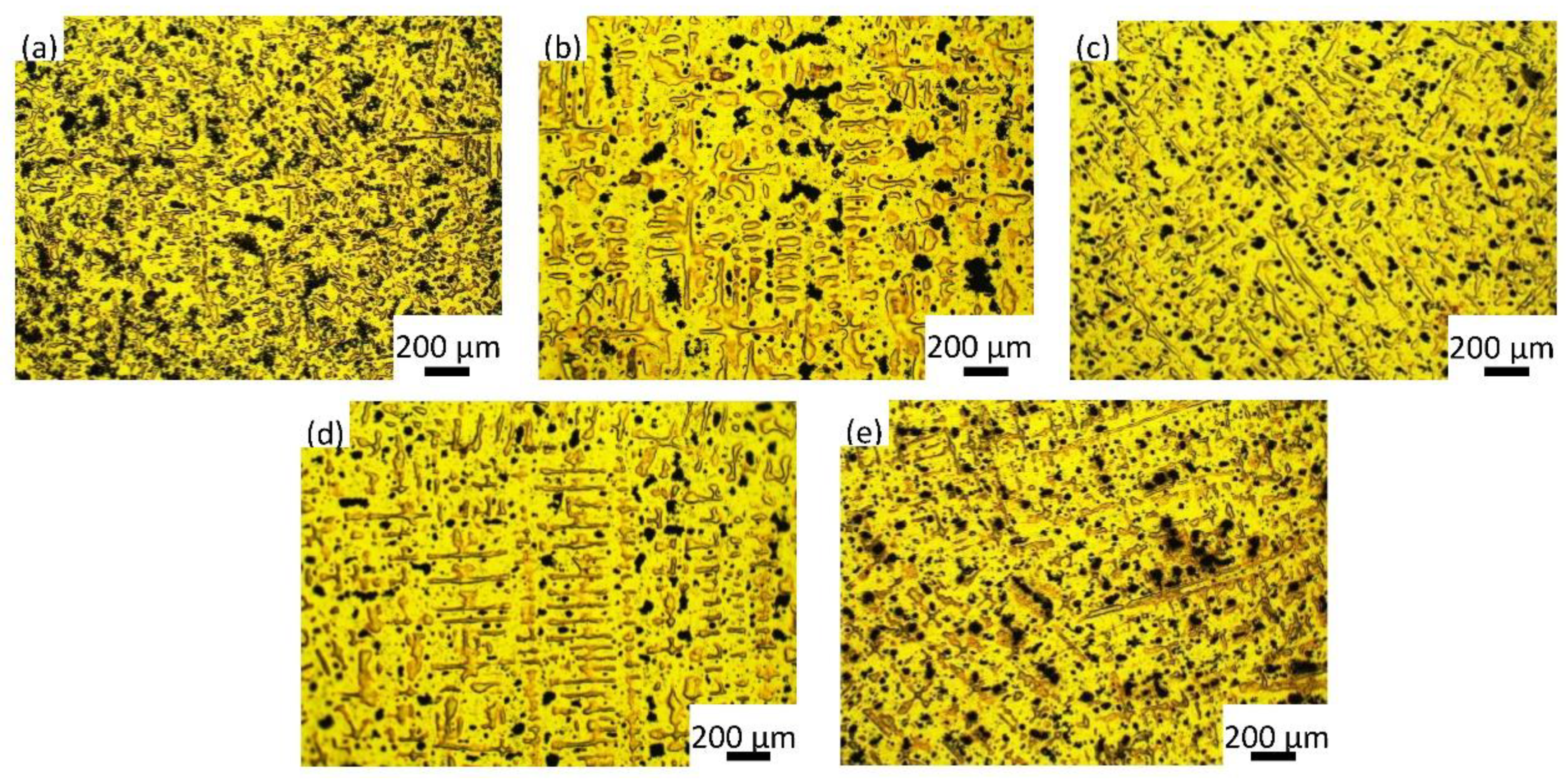

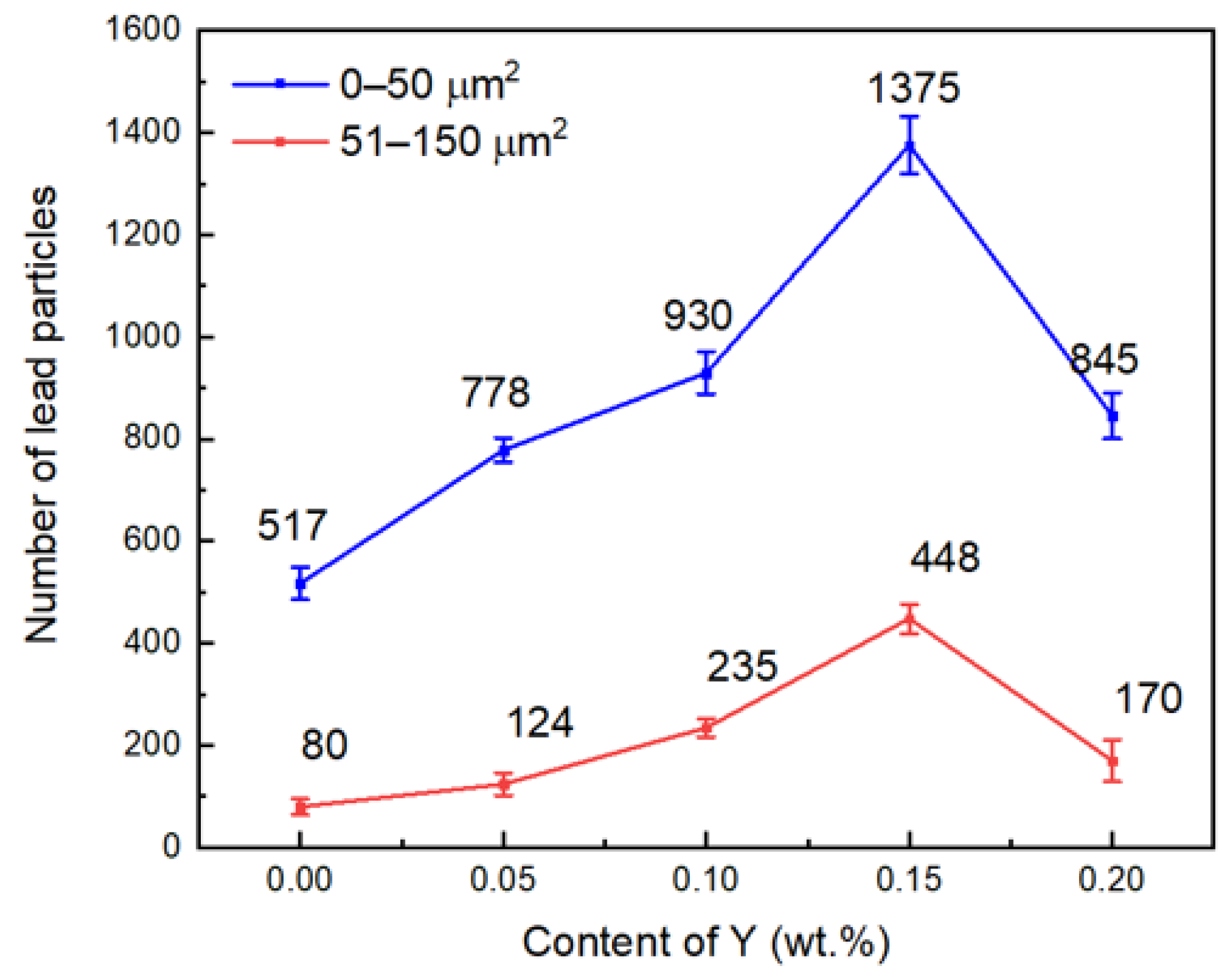
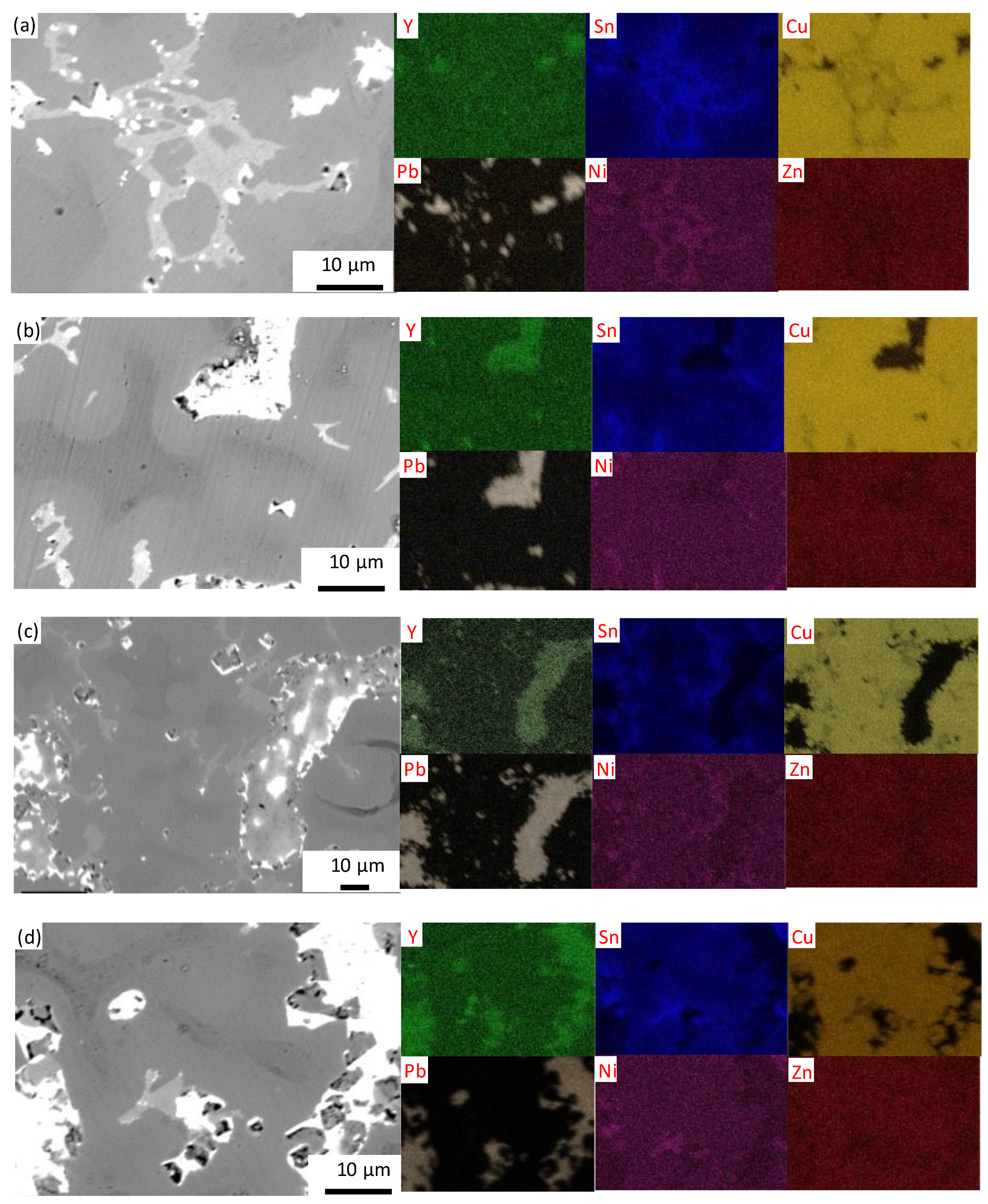
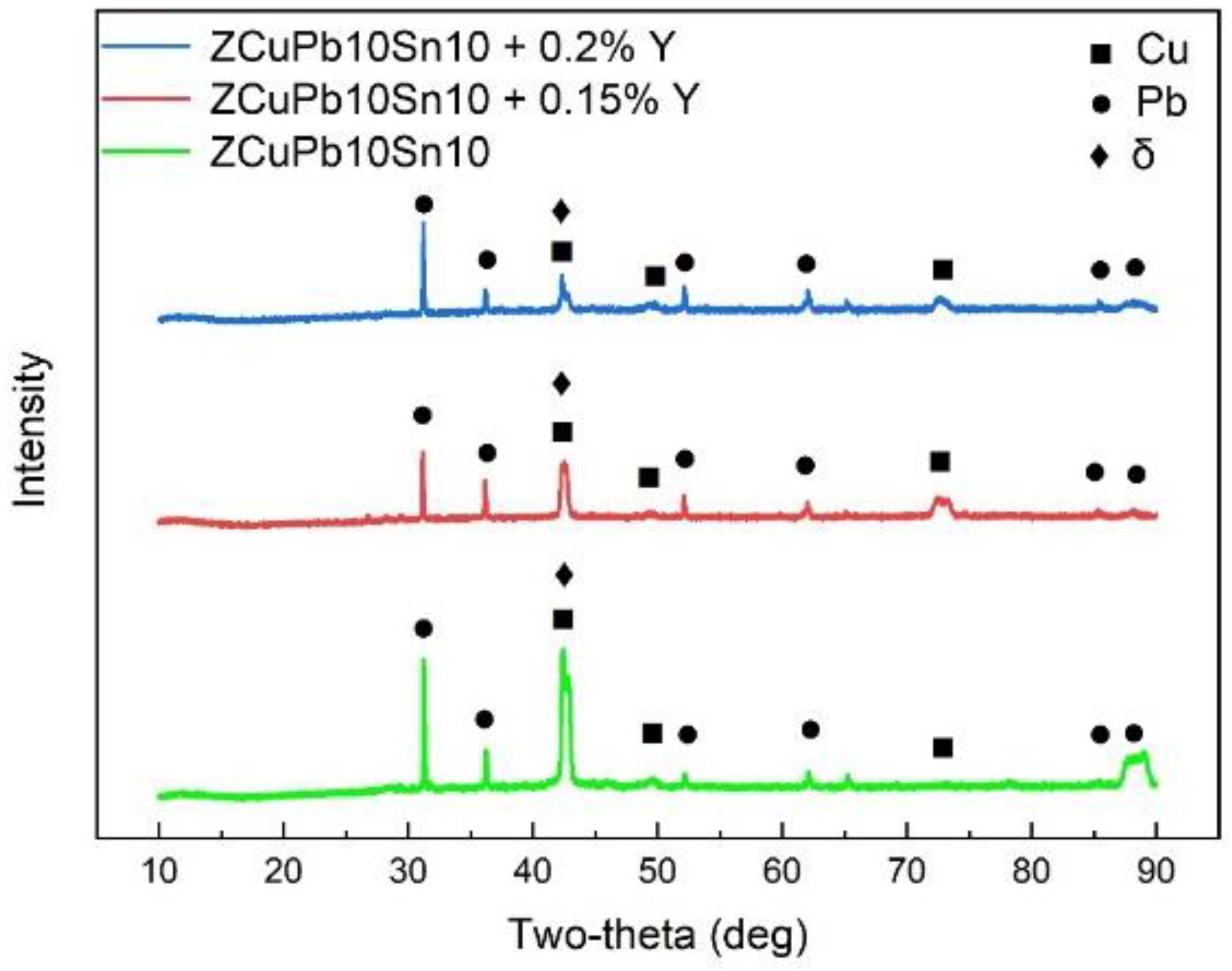

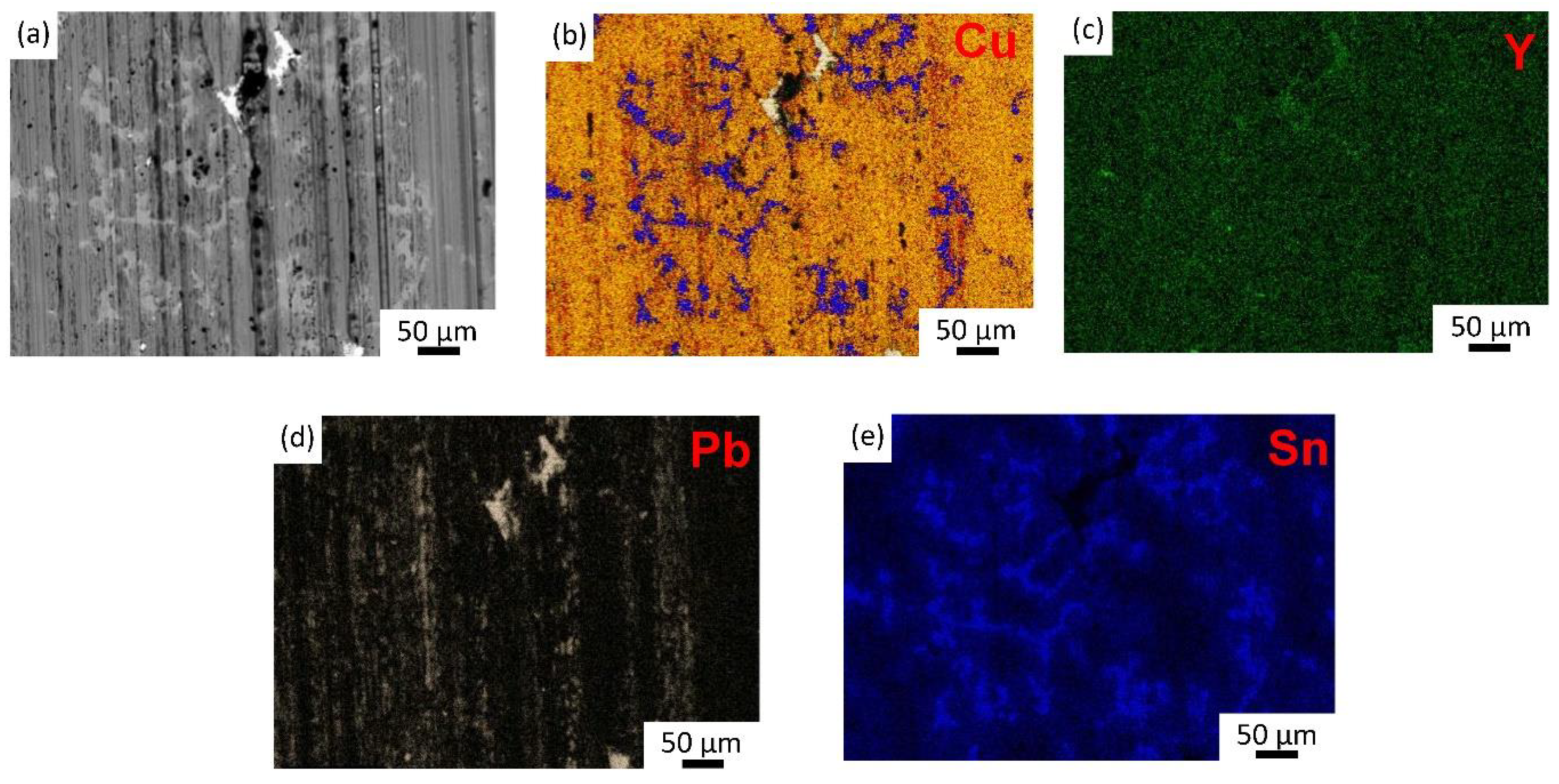
| Point | Y | Pb | Sn | Ni | Cu | Zn |
|---|---|---|---|---|---|---|
| A | 2.33 | 79.82 | 2.37 | 0.93 | 14.05 | 0.50 |
| B | 0.25 | 0.81 | 6.85 | 2.49 | 87.97 | 1.62 |
Publisher’s Note: MDPI stays neutral with regard to jurisdictional claims in published maps and institutional affiliations. |
© 2022 by the authors. Licensee MDPI, Basel, Switzerland. This article is an open access article distributed under the terms and conditions of the Creative Commons Attribution (CC BY) license (https://creativecommons.org/licenses/by/4.0/).
Share and Cite
Wang, Z.; Zhang, G.; Kang, Y.; Liu, Y.; Ren, X. The Effect of Y on the Microstructure, Mechanical and Wear Properties of ZCuSn10Pb10 Alloy. Materials 2022, 15, 1047. https://doi.org/10.3390/ma15031047
Wang Z, Zhang G, Kang Y, Liu Y, Ren X. The Effect of Y on the Microstructure, Mechanical and Wear Properties of ZCuSn10Pb10 Alloy. Materials. 2022; 15(3):1047. https://doi.org/10.3390/ma15031047
Chicago/Turabian StyleWang, Zhaojie, Guowei Zhang, Yuanyuan Kang, Yijun Liu, and Xiaoyan Ren. 2022. "The Effect of Y on the Microstructure, Mechanical and Wear Properties of ZCuSn10Pb10 Alloy" Materials 15, no. 3: 1047. https://doi.org/10.3390/ma15031047
APA StyleWang, Z., Zhang, G., Kang, Y., Liu, Y., & Ren, X. (2022). The Effect of Y on the Microstructure, Mechanical and Wear Properties of ZCuSn10Pb10 Alloy. Materials, 15(3), 1047. https://doi.org/10.3390/ma15031047





